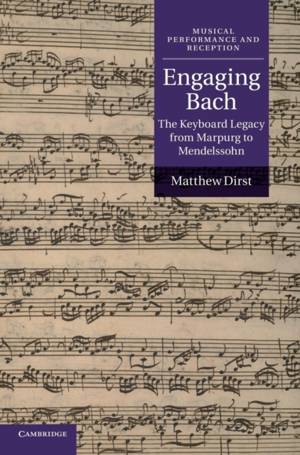
- Afhalen na 1 uur in een winkel met voorraad
- Gratis thuislevering in België vanaf € 30
- Ruim aanbod met 7 miljoen producten
- Afhalen na 1 uur in een winkel met voorraad
- Gratis thuislevering in België vanaf € 30
- Ruim aanbod met 7 miljoen producten
Zoeken
Omschrijving
More than any other part of Bach's output, his keyboard works conveyed the essence of his inimitable art to generations of admirers. The varied responses to this repertory - in scholarly and popular writing, public lectures, musical composition and transcription, performances and editions - ensured its place in the canon and broadened its creator's appeal. The early reception of Bach's keyboard music also continues to affect how we understand and value it, though we rarely recognize that historical continuity. Here, Matthew Dirst investigates how Bach's music intersects with cultural, social and music history, focusing on a repertory which is often overshadowed in scholarly and popular literature on Bach reception. Organized around the most productive ideas generated by Bach's keyboard works from his own day to the middle of the nineteenth century, this study shows how Bach's remarkable and long-lasting legacy took shape amid critical changes in European musical thought and practice.
Specificaties
Betrokkenen
- Auteur(s):
- Uitgeverij:
Inhoud
- Aantal bladzijden:
- 202
- Taal:
- Engels
- Reeks:
Eigenschappen
- Productcode (EAN):
- 9780521651608
- Verschijningsdatum:
- 7/05/2012
- Uitvoering:
- Hardcover
- Formaat:
- Genaaid
- Afmetingen:
- 175 mm x 249 mm
- Gewicht:
- 544 g

Alleen bij Standaard Boekhandel
+ 345 punten op je klantenkaart van Standaard Boekhandel
Beoordelingen
We publiceren alleen reviews die voldoen aan de voorwaarden voor reviews. Bekijk onze voorwaarden voor reviews.











